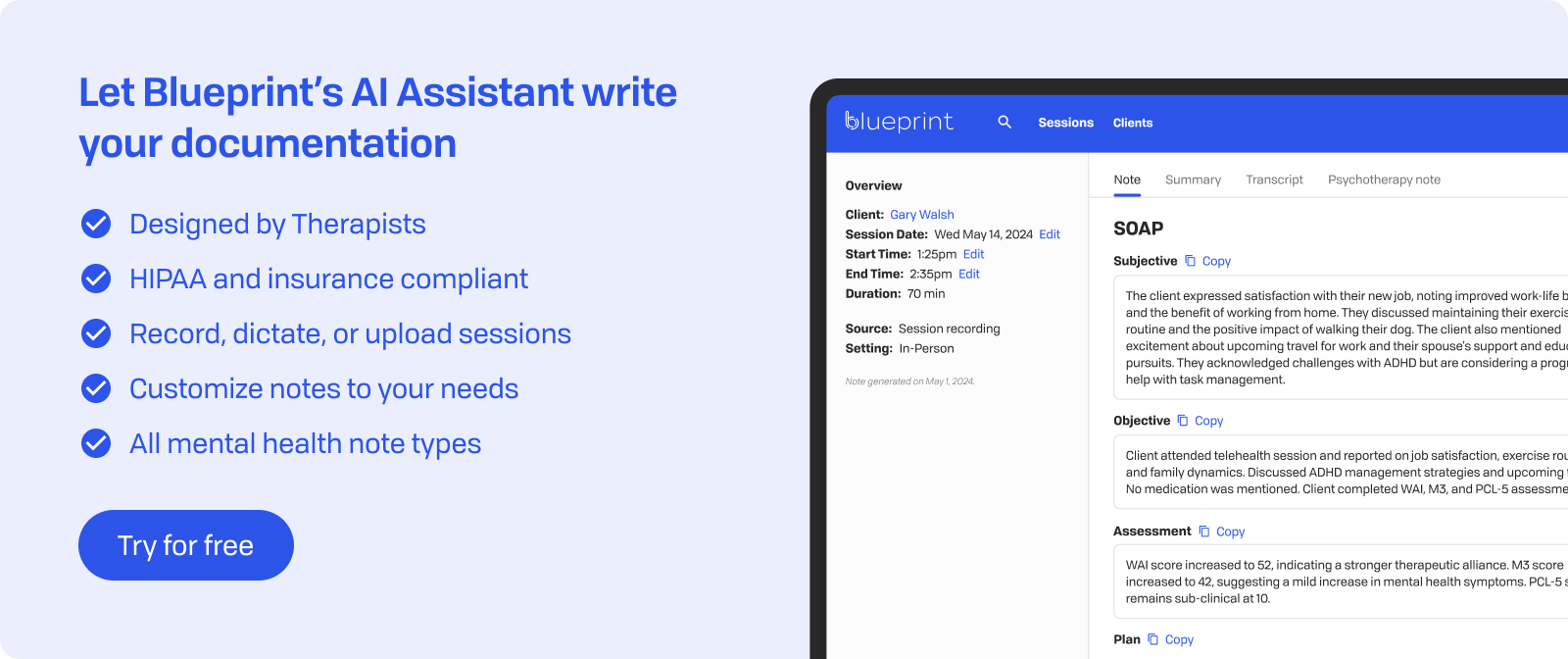
In Brief
Understanding emotions plays a central role in effective therapy. Many clients, however, struggle to identify their true feelings beneath layers of defensive responses and learned patterns. This gap between their authentic emotions and what they express can greatly impact therapeutic progress.
The distinction between primary and secondary emotions provides a useful framework for deeper therapeutic work. When we help clients access their core emotional experiences, we often find new pathways to healing that once seemed out of reach. This insight changes how we approach everything from assessment to intervention.
Working with primary emotions demands both theoretical knowledge and practical skill. We, as therapists, must stay aware of our own emotional responses while creating space for clients to explore theirs. This article looks into these fundamental aspects of emotional experience and their vital role in therapeutic change.
Defining Primary Emotions
Primary emotions are the universally experienced, biologically wired responses forming the foundation of our emotional lives. These innate reactions appear spontaneously in response to stimuli and are embedded in our nervous systems. They represent our most genuine, immediate emotional experiences before cognitive processing adds layers of interpretation.
The most commonly identified primary emotions include anger, fear, sadness, joy, disgust, and surprise. Each serves an evolutionary purpose, from protecting us from danger to fostering social connection. These emotions appear across all cultures and are recognizable even in infancy, highlighting their fundamental role in human experience.
Primary emotions serve as the basis for more complex secondary emotions that develop through learning and socialization. While a primary emotion like fear might arise instantly when facing a threat, secondary emotions like shame or guilt emerge through cognitive appraisal. Knowing this distinction helps therapists identify and work with the core emotional experiences driving client behavior.

The Role of Primary Emotions in Therapy
Primary emotions offer direct insight into client experiences that often get buried beneath layers of learned responses. These immediate, instinctive reactions represent the most genuine emotional data we can access in therapy. When we focus on these core feelings, we gain a clearer understanding of what truly matters to our clients.
In practice, primary emotions are frequently hidden by secondary or socially acceptable emotions. A client might show frustration or resentment (secondary emotions) when the underlying primary emotion is actually fear or sadness. This masking occurs automatically as clients learn to manage their emotional expression based on past experiences, cultural norms, or defensive patterns.
Recognizing primary emotions helps uncover core needs and patterns that drive client behavior. Consider these therapeutic benefits:
- Enhanced emotional clarity: Clients gain insight into their genuine emotional responses rather than filtered versions
- Improved emotion regulation: Processing primary emotions directly leads to more adaptive coping strategies
- Deeper therapeutic engagement: Working with authentic emotions fosters trust and meaningful change
- Pattern recognition: Primary emotions reveal recurring themes in relationships and life experiences
The therapeutic relationship itself relies on our ability to connect with these fundamental emotional states. When we respond empathically to primary emotions, we validate the client's core experience and create room for change. This connection interrupts negative feedback loops and opens pathways for new, healthier emotional responses.
Research consistently shows that therapies focusing on primary emotions lead to more lasting change than those addressing only surface-level presentations.
Differentiating Primary vs. Secondary Emotions
Primary emotions emerge as instinctive, immediate responses to stimuli—they're our nervous system's first reaction before conscious thought intervenes. These automatic responses arise from deeper brain structures and serve important survival functions. Secondary emotions, however, develop through cognitive processing and are shaped by our personal history, cultural context, and psychological defenses.
The key differences between these emotional categories include:
- Timing and duration: Primary emotions appear within milliseconds and typically fade as the triggering event passes, while secondary emotions can linger for hours, days, or even longer.
- Cognitive involvement: Primary emotions need minimal conscious processing, whereas secondary emotions involve reflection, interpretation, and meaning-making.
- Cultural influence: Primary emotions appear universally across cultures, but secondary emotions vary significantly based on social norms and learned behaviors.
- Therapeutic accessibility: Primary emotions often hide beneath secondary ones, requiring careful exploration to uncover.
In therapy, secondary emotions frequently serve as protective layers over more vulnerable primary feelings. A client expressing contempt (secondary) might be guarding against hurt or fear (primary). Similarly, chronic resentment often hides underlying sadness or disappointment.
Exploring secondary emotions opens a path to accessing underlying primaries. We might ask clients to notice physical sensations accompanying their emotions, slow down their emotional processing, or explore what happened just before the secondary emotion emerged. This approach reveals the authentic emotional experience that needs attention and validates the client's core feelings rather than their defensive responses.

Assessing emotional awareness in Clients
Tracking primary emotions requires attention to both verbal and non-verbal cues. Body sensations often signal primary emotions before clients can articulate them—tension in the chest might indicate fear, while heaviness in the shoulders could suggest sadness. We can guide clients to notice these physical markers through questions like "Where do you feel that in your body?" or "What sensations accompany that feeling?"
Client narratives provide another rich source for identifying primary emotions. Listen for moments when their voice changes, when they pause unexpectedly, or when their words don't match their emotional tone. These discrepancies often point to underlying primary emotions needing exploration.
Helping clients accurately name and differentiate their feelings involves:
- Building emotional vocabulary: Many clients use generic terms like "bad" or "upset" when more precise language would be helpful
- Creating emotion maps: Visual tools showing relationships between different feelings help clients recognize nuances
- Practicing emotional granularity: Teaching clients to distinguish between similar emotions (disappointed vs. sad, irritated vs. angry)
- Using scaling questions: Asking clients to rate emotional intensity helps them notice subtle differences
Some clients struggle with alexithymia—difficulty identifying and describing emotions—or engage in chronic emotional avoidance. These patterns require patience and creative approaches. Start with basic body awareness exercises, use metaphors or imagery to describe feelings, and normalize the difficulty of emotional recognition. For clients who intellectualize, gently redirect attention from thoughts about emotions to the felt experience itself.

Interventions to Work With Primary Emotions
Emotion-focused therapy (EFT) techniques offer practical tools for accessing and transforming primary emotions. These experiential approaches go beyond merely discussing feelings, encouraging clients to experience and process them in the moment. EFT allows clients to actively engage with their core emotions, promoting lasting emotional change.
Key EFT interventions include:
- Two-chair dialogue: Clients express conflicting emotions by speaking from different chair positions, which helps primary feelings to surface through direct expression.
- Empty chair work: Addressing unresolved issues with significant others helps access underlying hurt, anger, or longing.
- Focusing techniques: Directing attention to bodily sensations unveils emotions before they are cognitively processed.
- Evocative responding: Therapists use imagery and metaphor to help clients connect with and intensify emotional experiences.
Somatic awareness and mindfulness practices support these techniques by grounding clients in their physical experience. Body scanning identifies where emotions manifest physically, while mindful breathing allows observation of feelings without judgment. Progressive muscle relaxation can uncover emotions held in areas of chronic tension.
Role-playing and experiential exercises offer safe ways to explore deeper feelings that might otherwise remain hidden. Psychodrama techniques enable clients to embody different aspects of themselves or significant relationships. Gestalt experiments—such as exaggerating a gesture or completing the sentence "What I'm not saying is..."—often reveal primary emotions beneath the surface. These active interventions bypass intellectual defenses and connect clients directly with their genuine emotional experience.

Therapist Awareness of Their Own Emotions
Therapists often experience their own primary emotions during sessions, especially through countertransference reactions. These immediate, visceral responses—whether sudden anxiety, unexpected sadness, or a flash of anger—offer valuable insights into the therapeutic relationship and the client's internal world. Being aware of these emotions as they arise requires continuous self-awareness and practice.
Viewing therapist emotions as data can improve therapeutic effectiveness while maintaining appropriate boundaries. When we notice a strong primary emotion, we should ask ourselves: Is this my typical response, or does it reflect something the client is experiencing? This distinction helps us use our emotional reactions constructively without letting them overwhelm the session or blur professional boundaries.
Key strategies for managing these emotions include:
- Mindfulness practice: Developing present-moment awareness allows us to observe our feelings without becoming reactive or overwhelmed.
- Cognitive reappraisal: Turning intense emotional responses into constructive insights about the therapeutic process.
- Regular self-care: Participating in activities that promote emotional well-being and prevent the build-up of unprocessed feelings.
- Supervision and consultation: Discussing our emotional reactions with colleagues helps maintain clarity and a professional perspective.
Modeling emotional literacy and regulation can be a powerful intervention. When we acknowledge our emotions appropriately—saying something like "I notice I'm feeling moved by what you're sharing"—we demonstrate healthy emotional expression. This transparency, when used wisely, normalizes emotional experiences and shows clients that feelings can be acknowledged without losing control or professional composure.
Key Takeaways
Primary emotions form the foundation of all emotional experience, serving as the raw data that drives human behavior and relationships. These universal, biologically-wired responses—anger, fear, sadness, joy, disgust, and surprise—offer the most genuine insights into clients' needs and feelings. Recognizing them changes how we approach therapeutic work.
Identifying primary emotions clarifies client needs and deepens therapeutic insight in several important ways:
- Direct access to core experiences: Primary emotions reveal what matters most to clients, cutting through defensive layers and social conditioning.
- Enhanced therapeutic precision: Working with genuine emotions rather than secondary responses leads to more targeted interventions.
- Accelerated healing: Processing primary emotions addresses root causes rather than surface symptoms.
The ability to differentiate primary from secondary emotions significantly reduces therapeutic misattunement. When we respond to a client's anger without recognizing the underlying fear or hurt, we miss opportunities for deeper connection and change. This distinction helps us navigate complex emotional presentations with greater accuracy and empathy.
Awareness and processing of primary emotions foster healthier emotion regulation throughout life. Clients who learn to recognize and work with their immediate emotional responses develop:
- Greater emotional intelligence: Understanding the difference between reactive and genuine feelings.
- Improved coping strategies: Addressing emotions at their source rather than managing secondary reactions.
- Stronger relationships: Expressing genuine feelings creates more authentic connections.
- Reduced emotional overwhelm: Processing primary emotions prevents the buildup of unresolved feelings.
These skills extend far beyond the therapy room, providing clients with lifelong tools for emotional well-being and resilience.

How Blueprint can help streamline your workflow
Blueprint is a HIPAA-compliant AI Assistant built with therapists, for the way therapists work. Trusted by over 50,000 clinicians, Blueprint automates progress notes, drafts smart treatment plans, and surfaces actionable insights before, during, and after every client session. That means saving about 5-10 hours each week — so you have more time to focus on what matters most to you.
Try your first five sessions of Blueprint for free. No credit card required, with a 60-day money-back guarantee.























